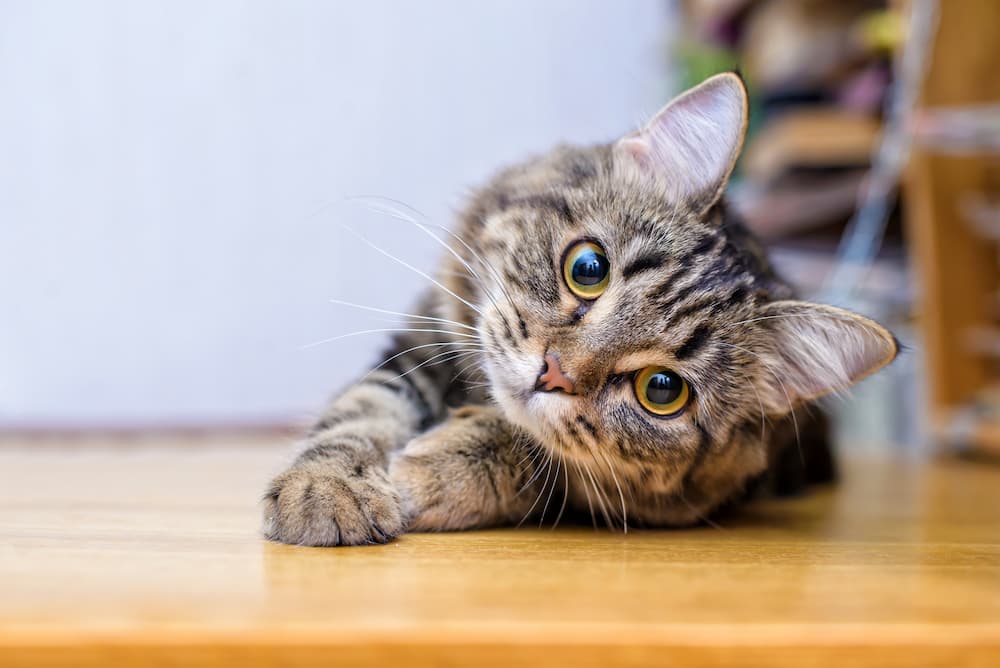Ever wondered about cleaning your cat's ears? Yes, it's necessary, but do it with care! Good ear hygiene is vital for preventing infections and other health problems. This article guides you, step-by-step, on how to clean a cat's ears safely and effectively. We'll cover which products to use and how often to clean, addressing concerns like cat earwax build-up and what to do if you notice a dirty cat ear.
We'll also share tips for making the process pleasant for you and your feline friend. Every cat is different; patience and gentleness are key to a positive experience.
Should you clean a cat's ears?
Absolutely, but not as often as a dog's. Cats are clean animals that groom themselves, but their ears can still accumulate wax, dirt, and sometimes mites. To prevent infections, inflammation, and other health issues, regular cleaning is essential. How often you clean depends on your cat's lifestyle. Outdoor cats get dirtier ears than indoor cats. Some breeds are also more prone to wax build-up.
How to clean a cat's ears
So, how do you clean a cat’s or a kitten’s ears? The best way to clean a cat's ears is with patience and care. Here's a step-by-step guide:
- Prepare the Environment: Choose a quiet, well-lit area where your cat feels safe.
- Have everything ready: cat-specific ear cleaner, cotton wool pads (not cotton buds), and treats.
- Gently Restrain your cat: Wrap your cat in a towel if needed. Speak calmly and soothingly.
- Examine the ears: Check for inflammation, redness, discharge, or a bad smell. See a vet if any of these are present.
- Apply the cleaner: Tilt your cat's head and apply a few drops of cat-safe ear cleaner into the ear canal.
- Massage the base of the ear: Gently massage for about 30 seconds to loosen wax and debris.
- Wipe the ear canal: Use a cotton wool pad to gently wipe the outer ear canal. Don't insert anything deep into the ear. Clean only what you can see.
- Let your cat shake: Allow your cat to shake its head to remove excess cleaner and debris.
- Dry the ears: Use a cotton wool pad to gently dry the ears.
- Reward your cat: Give a treat and praise for good behaviour.
If your cat becomes anxious, stop and try again later. Ear cleaning shouldn't be painful. If your cat cries, growls, or tries to bite, stop and see a vet. There may be an underlying issue.
What can I use to clean my cat's ears?
Choosing the right product to clean your cat’s ears is crucial. So, if you are wondering what you can use to clean your cat's ears, here are some options:
- Commercial ear cleaners: Look for gentle, non-irritating, cat-safe ear cleaners. Ingredients like boric acid or aloe vera are good.
- Saline Solution: A gentle option for removing dirt. Moisten a cotton wool pad and wipe the outer ear canal.
- Homemade ear cleaner for cats: Some people use a homemade ear cleaner for cats (equal parts white vinegar and warm water). However, this can irritate sensitive ears. Always check with a vet first.
Before using any product, test it on a small area of your cat's skin to ensure it doesn't cause irritation. Also, pre-moistened wipes are available for cat ear hygiene. Ensure any product is specifically formulated for cats.
How often should you clean your cat's ears?
How often depends on your cat's age, breed, lifestyle, and health. Generally, clean every 1-2 weeks if your cat is prone to wax build-up or ear infections. If ears are clean, once a month may be enough. Regularly check your cat’s ears and only clean when needed. Over-cleaning can remove protective wax and increase infection risk. Breeds with hairy ears may need more frequent cleaning. If unsure, consult your vet for a tailored routine. Watch for signs like scratching, head shaking, or discomfort, indicating the need for cleaning.
Ear cleaning tips for Cats
Here are some extra tips for a positive ear cleaning experience:
- Start young: Get your kitten used to ear touches early on.
- Be patient: If your cat resists, don't force it. Try again later.
- Use positive reinforcement: Give treats and praise during and after cleaning.
- Watch your cat's response: If your cat shows pain or discomfort, stop and consult a vet.
- Consider professional help: If you're not comfortable cleaning, ask your vet or a groomer.
Keep the process calm and gentle. Speak softly and work in a quiet space. If needed, wrap your cat loosely in a towel, avoiding squeezing. Break cleaning into short sessions: one ear today, the other tomorrow.
In addition to these tips, remember that good hygiene not only includes ear care, but also keeping your cat’s environment clean and pleasant. Making sure that their litter box is in optimal condition is essential for their overall well-being. Our clumping litter helps keep the bathroom area cleaner and free of odors, resulting in a healthier and less stressful environment for your cat.
In conclusion, cleaning your cat’s ears is an important part of pet care. With the right products, proper technique, and a bit of patience, you can keep your cat’s ears clean and healthy, preventing infections and other health issues. Ear cleaning is just one part of comprehensive pet care, but it can have a significant impact on their overall well-being.

